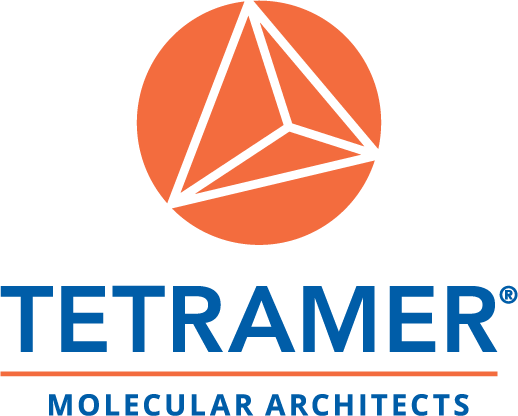The Tetramer team is excited to begin work on a new Phase II award from the Department of Energy to develop improved membranes for solar fuels generators.
Solar fuels generators can be thought of as performing artificial photosynthesis. Generators harness solar energy to produce hydrogen from water or to produce carbon-based fuels from water and carbon dioxide in a manner analogous to plants.

Ion exchange membranes are a critical component in solar fuels generators, but current commercial membranes do not meet the challenging requirements of this developing technology.
Building on existing Tetramer proprietary technology developed in Phase I, Tetramer will develop new cation exchange membranes that address the challenges of both solar-to-hydrogen and solar-to-carbon fuels generators. These novel membranes will improve efficiency while limiting hazardous mixing of hydrogen and oxygen, reduce costs, and improve durability compared with existing materials.
Success of this work is an important step towards realizing the goal of achieving cost effective renewable fuel production. The use of solar generated fuels for industrial gas applications/chemical feedstocks, transportation fuels, and power backup/storage would result in a reduced dependence on fossil fuels and limit the associated economic, political and environmental issues related to their extraction, refinement, supply and final use.
_________________
PROJECT SUMMARY
Improved Membranes for Solar Fuels Generators
Tetramer Technologies, LLC
Problem Being Addressed: Solar fuels generators harness solar energy as the power source to generate either hydrogen or carbon based fuels. In both cases, water is electrochemically oxidized to produce oxygen, protons and electrons at the anode. Hydrogen or carbon based fuels are produced at the cathode by the reduction of protons or carbon dioxide, respectively. Ion exchange membranes are a critical
component of the system, but current commercially available membranes do not meet the challenging requirements of this developing technology.
Approach to Solving Problem: This work will focus on the development of new cation exchange membranes that address the challenges of both solar-to-hydrogen and solar-to-carbon fuels generators. Novel membranes will be developed which demonstrate reduced hydrogen permeation (to improve efficiency and limit hazardous mixing of hydrogen and oxygen), reduced costs and improved durability compared with existing materials. Additional requirements for solar-to-carbon fuels membranes such as chemical stability and low permeability to complex mixtures of potential products such as methanol are also being addressed.
Phase I Accomplishments: During Phase I we successfully demonstrated the fabrication of novel membranes which outperform current commercial materials in many of the key requirements for effective solar fuels membranes. This was achieved through systematic modification of the molecular architecture and chemical functionality of an ion exchange membrane technology previously developed in our laboratories for other applications. As a result of this work we have down-selected two of our best performing materials which demonstrate good conductivity in conjunction with significantly improved hydrogen and methanol permeability characteristics compared with current commercially available membranes.
Plans for Phase II: During Phase II, we plan to further optimize and develop our Phase I down-selected materials. Our primary focus will be toward optimizing performance and evaluating and understanding possible failure mechanisms and developing methods to ensure long term stability and durability under solar fuels generator operating conditions. Techniques demonstrated during Phase I to enhance stability and reduce permeability to carbon dioxide reduction products will be further developed.
Commercial and Public Benefits: Success of this work would be an important step towards realizing the goal of achieving cost effective renewable fuel production. Examples of three critical areas which would be affected by success in the proposed work include industrial gas applications/chemical feedstocks, transportation fuels and power backup/storage. For each of these applications, the use of solar generated fuels would result in a reduced dependence on fossil fuels and the associated economic, political and environmental issues related to their extraction, refinement, supply and final use.
Summary for Members of Congress
Solar fuels generators harness solar energy to produce hydrogen from water or carbon based fuels from water and carbon dioxide. As a critical component, custom designed ion exchange membranes are being developed to significantly improve the efficiency and commercial potential of this developing technology.
Key Words: Solar Fuels Generators, Hydrogen, Artificial Photosynthesis, Carbon Dioxide
Reduction Products, Cation Exchange Membranes, Energy Storage


